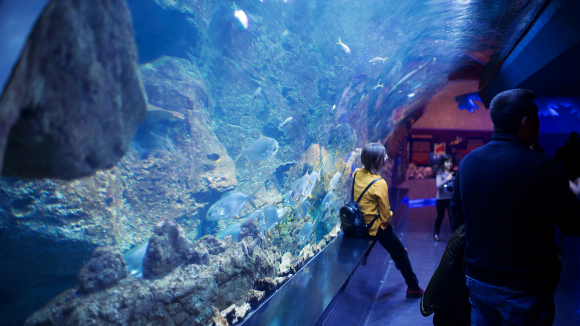Cancel The Seattle Aquarium Shark Tank!



Illegal Wildlife Trade
Wildlife Crime
Sharks and stingrays will be possibly “sourced” (i.e. forcibly captured and removed) from the waters of the South Pacific, where they may be endangered. This capture will decimate wild shark populations and potentially contribute to the illegal wildlife trade. Ironically, the Association of Zoos and Aquariums has a staunch anti-wildlife trafficking initiative, of which the SEA aquarium is a member. Due to many factors, the global legal and illegal shark trades are heavily intertwined; in many cases, tracking the sharks’ origins in order to make sure that they were captured or bred legally is nearly impossible.
Did You Know?
The Seattle Aquarium’s new tropical shark tank is part of the larger waterfront overhaul congesting downtown. In addition to using taxpayer money, the aquarium will likely capture Sharks from the South Pacific if they can’t find ones from other facilities which have bred them. Sharks are complex and intelligent beings who will die young in a tiny tank.
Unfortunately, Seattle is prepping for a public disruption similarly seen after the release of the documentary Blackfish, when the public rose up against the unimaginable cruelty of confining Orcas inside aquariums. Sharks travel far distances in the wild, like Orcas, have complex inner lives that are not nearly as studied as the Orca, and are unable to thrive (and even survive) in tanks that are equivalent in size to a bathtub, just like captive Orcas. Sharks deserve the same outrage that Orcas, other Dolphins, and Whales receive when confined inside aquarium tanks.
Captivity Complications
Sharks in Captivity
Many sharks and stingrays either captured or bred in captivity die young because their lives are so profoundly altered from what would have been their natural habitat. For example, the bowmouth guitarfish gathers enough speed in between the ocean floor and the water’s surface that they can jump up into the air at astounding heights, likely to rid themselves of bacteria. These natural behaviors that require lots of swimming room are not possible to partake in when inside of a manufactured environment.

Green House Gas Emissions
PNW Warming
At 325,000 gallons of water, this shark tank will use huge amounts of energy in its filtration process. The shark tank is a tropical shark tank, not one that could resemble anything like what you would find here in the Puget Sound. This tropical tank will require lots of energy to heat up to an appropriate level. Water must continuously be pumped in from Elliot Bay to be heated and filtered, used, and then be re-cooled and filtered and pumped back out into the Sound. The process of heating and cooling water on a constant basis will contribute towards higher emissions.
Did You Know?
Cyanide is a common but environmentally devastating method of catching fish in the wild. “There have been efforts to reduce some of the most destructive practices, such as cyanide fishing. But the [aquarium] trade is extraordinarily difficult to regulate and track as it stretches from small-scale fishermen in tropical seaside villages through local middlemen, export warehouses, international trade hubs and finally to pet stores in the U.S., China, Europe and elsewhere.” – Fortune.com
Policy Rollbacks
Broken Promises
Seattleites consider climate change a top priority; we should be spending money on projects countering its negative effects, especially for our black and brown community members. In light of this Council vote, taxpayers are left with the impression that our City Council thinks it’s okay to fund projects that significantly harm the climate, as long as its business partners and board member associates benefit from it. City Council has flagrantly tossed aside Seattle’s Climate Action plan and Green New Deal for the benefit of a few.

We Have To Pay
Taxpayer-Funded
This shark tank is being funded by taxpayer money from the Real Estate Excise Tax (REET), a tax program funded by the sale of real property; this means YOU fund this program. Typically, the Real Estate Excise Tax is used to fund critical infrastructure projects that benefit the locals who pay for them, like funding street safety initiatives, West Seattle Bridge repairs, and cleaning up and making more accessible city parks.
Did You Know?
The Seattle City’s 2023-2024 budget earmarked another $20 million for the shark tank project. Comparatively, Seattle only dedicated $4 million for mental health support in schools, $1 million for eviction avoidance support, and $17 million for affordable homeownership initiatives. Funding for the Mayor’s acclaimed Green New Deal equals $20 million, exactly the same amount as the shark tank.
Budget Mismanagement
Fund What Matters
Seattle Aquarium has clearly mismanaged its project budget, which started at $113 million and is now at $160 million. Instead of funding an ever more expensive shark tank, Seattleites want to loan out our money to fund efficient and economically-just projects for our houseless person crisis; open drug usage on public streets and in public parks; crumbling transportation infrastructure; and lack of green spaces in low income communities, putting Seattle at odds with its new Environmental Justice Initiative.



